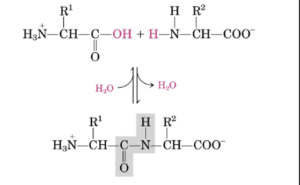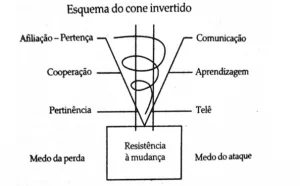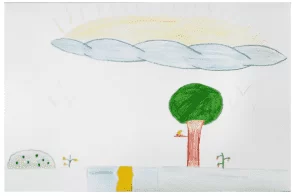INTREGATIVE REVIEW
LEÃO, Marco Härter [1], DUARTE, Luiz Felipe Bastos [2]
LEÃO, Marco Härter. DUARTE, Luiz Felipe Bastos. Theoretical integrative review about the possible factors that lead to suicide attempt. Revista Científica Multidisciplinar Núcleo do Conhecimento. Year 05, Ed. 11, Vol. 04, pp. 101-110. November 2020. ISSN: 2448-0959, Access link: https://www.nucleodoconhecimento.com.br/psychology/suicide-attempt
ABSTRACT
There are multiple factors related to the suicide attempt that, in most cases, are linked to the desire to break with a reality of great psychological suffering. This study aims to conduct an integrative literature review, in Portuguese-language articles from the last 5 years about the possible risk factors that lead to suicide attempt. The following descriptors were used for the search: suicide, factors, risk and attempt. 10 articles related to the subject of work were selected from a screening and subsequently separated into 5 categories for analysis: risk factors in childhood, risk factors in adolescence, risk factors in adulthood, risk factors in old age and risk factors predisposing general conditions. The results show the main causes of suicide in each age group: family conflicts in childhood; construction of identity in adolescence; interpersonal relationships in adulthood; and lack of autonomy in old age.
Keywords: risk factors, behavior, suicide.
INTRODUCTION
Suicide has multiple factors, which can vary according to each individual, some more evident in some age group and others common to all ages. It is necessary to know the possible factors that lead to suicide attempt, therefore, the objective of the present work is to carry out an integrative literature review on the subject and to discover the possible factors that lead to suicide attempt, in order to help those who they will deal with this and so that one can try to understand the causes of new attempts and avoid the consummation of the act, which can lead to the end of a life.
According to Botega (2014), suicide is a major cause of death for people between 15 and 44 years of age. Most cases involve some mental disorder, the main causes being depression, bipolar mood disorder, or alcohol and other psychoactive substances.
For the Federal Council of Psychology (2013), the factors that involve suicide are multiple (biopsychosocial), the main ones being: related to mental disorders, depression, or abuse of psychoactive substances, which represents 90% of the cases. Every case of suicide is a marker of psychological distress, or mental disorder. Psychic suffering is something existential, which we all experience to a lesser or greater extent during life, but associated with a psychiatric disorder, in severe cases, can offer a greater risk of suicide.
For Owens; Horrocks and House (2002), a suicide attempt considerably increases the risk of its future implementation in relation to population indices in general. According to Hillman (1993), suicide is not a syndrome, nor a symptom, it is something complex, even more than a psychosis, sexual tension, or physical violence, because it is not a problem of life, but a problem of life and death. The individual does not simply commit suicide, but rather fulfills certain conditions for making the attempt, those that would have to do with the society in which he lives and his internal world. It would be necessary to bring the individual closer to his social group, because isolation, caused by problems experienced as divorce, failure, widowhood, etc., is a disintegrating influence and, in face of this, the human being can try to commit suicide. This author also highlights the unconscious aspects of the individual, for him, before approaching the problem of suicide, we must first understand his life. It is necessary to know the conscious and unconscious aspects of the individual’s personality, his internal inquiries such as dreams, fantasies and mode of perception in order to form an adequate picture of the reasons that lead to the suicidal act.
METHODOLOGY
The present study constitutes an integrative literature review. To this end, a search was carried out in the following online databases: Scielo, PEPSIC and Google Scholar.
The descriptors used were “suicide” in combination with others, such as: factors, risk and attempt. Inclusion criteria were adopted: articles in Portuguese, with the theme risk factors that lead to attempted suicide, with publication year between 2013 and 2018. While the exclusion criteria, were: repeated articles, articles that escaped the theme, articles in English and with publication date prior to 2013. After reading the articles found, the data was organized based on the following categories: risk factors in childhood, risk factors in adolescence, risk factors in adulthood , risk factors in old age and general predisposing risk factors in order to categorize the information considered important for the general objective of this work.
RESULTS PRESENTATION
After conducting the research according to the proposed descriptors, the following results were found: 9 articles in the PEPSIC database, 25 in Scielo and 35 results in Google Scholar.
After reading the 69 articles found, 59 articles were excluded because they did not follow the theme of this research, or because they were repeated. Thus, 10 relevant articles were considered for study purposes, which are identified below by the name of the author, title, general objective and methodology (Chart 1).
Table 1 – Characteristics of the articles selected in the digital databases (N = 10).
| N ° / Author | Title | Methodology | Main goal |
| 1. Maria Raquel de Oliveira Alcântara; Thércia Lucena Grangeiro Maranhão; Ana Olívia de Oliveira Marinho; Leonardo Carvalho de Macedo. | O papel do cuidador na identificação dos fatores relacionados ao suicídio de idosos (The role of the caregiver in identifying factors related to the suicide of the elderly) | Qualitative bibliographic research. | Identification of possible factors that lead elderly people to commit suicide. |
| 2. Nadja Cristiane Lappann Botti; Luiza Cantão; Aline Conceição Silva; Thais Gonçalves Dias; Livian Carrilho Menezes; Ramon Azevedo Silva de Castro. | Características e fatores de risco do comportamento suicida entre homens e mulheres com transtornos psiquiátricos (Characteristics and risk factors of suicidal behavior among men and women with psychiatric disorders | Quantitative study with descriptive and inferential analysis. | Identify characteristics of suicidal behavior and risk factors of men and women with psychiatric disorders. |
| 3. Ana Carolina Rodrigues Pereira; Vanessa Cristina Alvarenga. | Suicídio: um estudo sobre os fatores de risco (Suicide: a study on risk factors) | Systematic literature review. | Understand suicidal behavior. |
| 4. Luiza de Lim Braga; Débora Dalbosco Dell’Aglio. | Suicídio na adolescência: fatores de risco, depressão e gênero (Adolescent suicide: risk factors, depression and gender) | Systematic literature review. | Discuss risk factors for adolescent suicide from a developmental perspective. |
| 5. Miria Benincasa; Manuel Morgado Rezende. | Tristeza e suicídio entre adolescentes: fatores de risco e proteção (Sadness and suicide among adolescents: risk and protective factors) | Focus group for data collection and analysis. | Identify risk and protective factors related to suicide. |
| 6. Yohanna Cerqueira; Patrícia Lima. | Suicídio: a prática do psicólogo e os principais fatores de risco e proteção (Suicide: the psychologist’s practice and the main risk and protection factors) | Systematic literature review. | Bring a contribution to the field of psychology and related areas regarding suicidal behavior. |
| 7. Adriano Schlösser; Gabriel Fernandes Camargo Rosa; Carmen Leontina Ojeda Ocampo More. | Revisão: Comportamento suicida ao longo do ciclo vital (Review: Suicidal behavior throughout the life cycle) | Systematic literature review. | The study aims to review articles on suicidal behavior throughout the life cycle, identifying risk and protective factors. |
| 8. Marta Brás; Saul Jesus; Claúdia Carmo. | Fatores psicológicos de risco e protetores associados à ideação suicida em adolescentes (Psychological risk and protective factors associated with suicidal ideation in adolescents) | Analysis and collection of data from the sample group. | To study the relationship between psychological risk and protection factors with suicidal ideation. |
| 9. Girliani Silva Sousa; Marilia Suzi Pereira dos Santos; Amanda Tabosa Pereira da Silva; Jaqueline Galdino Albuquerque Perrelli; Evertgon Botelho Sougey. | Revisão de literatura sobre suicídio na infância (Literature review on childhood suicide) | Systematic literature review. | Analyze the specific literature on factors associated with suicidal behavior in children up to 14 years of age. |
| 10. Maria Cecília de Souza Minayo; Fátima Gonçalves Cavalcante. | Suicídio entre pessoas idosas: revisão de literatura (Suicide among the elderly: a literature review) | Systematic literature review. | Promote a literature review on the topic of suicide among elderly people. |
Source: The Author (2018).
DISCUSSION
The present study aimed to carry out an integrative literature review, in Portuguese-language articles from the last 5 years, about the possible risk factors that lead to suicide attempt. From a previous reading of the articles found (Chart 1), a categorical division of the subjects relevant to the objective of this work was created. The categories reached are: risk factors in childhood, risk factors in adolescence, risk factors in adulthood, risk factors in old age and general factors predisposing to suicide attempt. The risk factors that lead to attempted suicide are evidenced in each of them.
Before elucidating the categories, it is necessary to conceptualize two important terms, present in their reading, which are: attempted suicide and suicidal ideation. According to Ferreira (2008), a suicide attempt is defined as any non-fatal, self-inflicted act that attacks one’s own life. Meanwhile, suicidal ideation, according to Silva (2006), constitutes the idealization and planning of the death of oneself, that is, it is the fantasy, or desire that precedes the suicide attempt.
The first category “risk factors in childhood” addresses, through articles 7 and 9, the main causes of suicide attempts in the 5 and 14 year old age group. Family conflicts are a great indicator, children who participate in a hostile family environment, with a lack of dialogue and strict rules are more likely to develop suicidal ideas. So too, the presence of depressive relatives, or parents who attempted suicide also contributes to increasing the risk of suicidal thoughts in this age group. Other stressors, such as parents’ divorce, or a history of sexual abuse, are also associated with risk factors. Psychic, cognitive and substance abuse factors are part of the causes of suicide, with low school performance being a major predisposing factor for suicide attempts, which may be directly linked to some type of cognitive problem such as ADHD (Attention Deficit Hyperactivity Disorder). The child in the school environment is at risk of being bullied, a type of physical aggression, or psychic in order to humiliate him, which can cause his isolation and death. In addition, low school performance can make you afraid of criticism and social and family pressures. Any change in the child’s behavior can be a risk factor, since they tend to isolate themselves and act strangely in the weeks leading up to their suicide, avoiding even going to school on the day of the attempt. It is important to pay attention to the child’s personality traits that may be linked to risk factors, since children who are more angry, anxious and impulsive, or with depressive traits are more likely to try.
The second category “risk factors in adolescence” addresses, through articles 4, 5, 7 and 9, the main causes of suicide, in the 15 to 19 year old age group. Adolescence itself as a stage of life is a risk factor, since it is a time of crisis and construction of identity (personality), with low tolerance to frustration, and vulnerability of the self. Sadness, lack of motivation, feelings of hopelessness, and depressive symptoms are risk factors that can lead to suicide attempts, as young people who have such conditions are more likely to be victims of suicidal ideas. These factors, in turn, can be linked to family problems, love relationships, betrayal of friends, feelings of helplessness, financial issues, or a lack of privacy and listening. Some factors that occur in adolescence are similar to the causes of child suicide, such as cognitive and psychological problems, school difficulties, substance abuse and bullying, being the greatest predisposing factors for suicidal ideation.
The third category “risk factors in adulthood” explores through articles 2, 6 and 7 the main causes of suicide, in the age group of 35 to 54 years old. The most affected in this phase is the man, who, due to the patriarchal culturality of the “provider man”, is more vulnerable when he is in situations of unemployment, or impoverishment. Furthermore, in this phase, regardless of gender, it is important to create bonds, and the absence of isolation, since adults without close relatives, friends, or some type of affective / loving relationship, are more susceptible to suicidal ideas. The loss of interpersonal relationships can also be related to suicidal ideation, demonstrating that the loss of bonds can be as serious as their absence. Finally, a family history of psychiatric illnesses, mainly depression, may also be associated with a higher risk of suicide, in addition, as in other age groups, adults also suffer abuse of chemical substances, which may precipitate or predispose the attempt of suicide.
The fourth category “risk factors in old age” composed by articles 1, 3, 6, 7 and 10 explore the age group above 75 years of age, in which the elderly are more vulnerable to suicide attempt. The main risk factors found in this group are the loss of autonomy and lack of satisfaction of basic needs, which may be related to physical or psychological illnesses and the lack of care by the family or caregiver. In this phase of life, a large number of biological, social and psychological transformations take place, which affect self-esteem, predisposing them to attempt suicide, in order to alleviate feelings of anguish, hopelessness and suffering. Depressed or depressed patients have up to twice the risk of attempting suicide. On the other hand, issues such as retirement, loss of social function, or death of close people are also related to the risk of suicidal behavior at this age. Other contributing factors may be the hostile environment and the lack of family affection, since the elderly person is weakened due to age limitations.
The fifth and last category, “general predisposing factors for suicide attempt”, presents information found in the 10 analyzed articles, and discusses the risk factors for suicide attempt in all age groups. The main risk factors for suicidal ideation are related to mental disorders and substance abuse (legal and illegal). There are also gender specificities: while in men there is a higher risk of suicide due to drug use, in women the greatest risk factor is a history of abuses of all kinds, as well as mood disorder. Finally, several other factors can be considered predisposing to suicide attempts regardless of age: family history of suicide; previous attempts; disabling physical and psychological illnesses; social isolation and feeling of loneliness; helplessness and hopelessness.
According to the Brazilian suicide prevention booklet, according to Unimed (2018), risk factors for suicide that go against the information in articles in the latter category. Among the main factors are sociocultural, genetic, existential and environmental philosophical problems. Being aggravating conflicts, disasters, violence, abuse, or losses, social isolation and mental disorders.
According to the World Health Organization (2000), those who attempted suicide in most cases have some diagnosable mental disorder. The diagnostic groups, in order of risk, are: depression (all forms); personality disorder (antisocial and boderline with traces of impulsiveness, aggression and frequent mood swings); alcoholism (and / or substance abuse in adolescents); schizophrenia; organic mental disorder. Therefore, although there are several risk factors involved in a suicide attempt, it is evident that the presence of a mental disorder is the main cause regardless of age.
FINAL CONSIDERATIONS
Taking into account the general objective of the present study, which is to carry out an integrative literature review about the possible factors that lead to suicide attempt, the literature indicates that the determining factors of suicide attempt are multiple. General factors, common to all age groups, are social isolation, substance abuse, lack of affection and psychological problems. They are specific factors, related to the main causes of suicide, in each age group: family conflicts in childhood; construction of identity in adolescence; interpersonal relationships in adulthood; and lack of autonomy in old age.
In all cases of attempted suicide, what can be noticed is a break, or an attempt to break, with the current reality, which can happen consciously, or unconsciously. In cases of mental illness and substance abuse, due to a break with reality, or loss of full mental capacities, the individual becomes vulnerable to attempting suicide, as he is not completely aware of his actions. The change in mental state interferes with the way he views reality, as he is weakened due to the altered perception of the world around him. When the human being no longer finds meaning in his existence, he feels lonely, faces a large number of biopsychosocial changes, pain, or anguish, suicide becomes an alternative to break with his current reality and the suffering caused by it.
The present study encountered some difficulties, such as the limitation of literature due to the restriction of the study to articles in the Portuguese language. In addition, only a snippet of the original ideas of the authors of the articles was used, and the content of the risk factors that may lead to suicide attempt, within this delimitation, is poorly understood. It is up to health professionals and future studies to better explore the risk factors that can lead to suicide attempts.
REFERENCES
Alcântara, Maria Raquel de Oliveira; Maranhão, Thércia Lucena Grangeiro; Marinho, Ana Olivia de Oliveira; Macedo, Leonardo Carvalho (2018). O papel do cuidador na identificação dos fatores relacionados ao suicídio de idosos. Revista multidisciplinar de de psicologia. Recuperado através de: < https://idonline.emnuvens.com.br/id/article/view/1021>
Benincasa, Miria (2013). Tristeza e suicídio entre adolescentes: fatores de risco e proteção. Boletim de psicologia. Recuperado através de: < http://pepsic.bvsalud.org/pdf/bolpsi/v56n124/v56n124a07.pdf>
Botega, José Neury (2014). Comportamento suicida: epidemiologia. Campinas, São Paulo. Recuperado através de: < http://www.scielo.br/pdf/pusp/v25n3/0103-6564-pusp-25-03-0231.pdf>
Botti, Nadja Cristine Lappan; Cantão, Luiza; Silva, Aline Conceição; et al (2018). Características e fatores de risco do comportamento suicida entre homens e mulheres com transtornos psiquiátricos. Cogitare enfermagem. Recuperado através de: <http://docs.bvsalud.org/biblioref/2018/05/883500/54280-231505-1-pb.pdf>
Braga, Luiza de Lima; Dell’Aglio, Débora Dalbosco (2013). Suicídio na adolescência: fatores de risco, depressão e gênero. Universidade Federal do Rio Grande do Sul. Recuperado através de: < http://revistas.unisinos.br/index.php/contextosclinicos/article/viewFile/ctc.2013.61.01/1533>
Carmo, Claúdia; Jesus, Saul; Brás, Marta (2016). Fatores psicológicos de risco e protetores associados à ideação suicida em adolescentes. Psicologia, Saúde e Doenças. Recuperado através de: < http://www.scielo.mec.pt/pdf/psd/v17n2/v17n2a03.pdf>
Cerqueira, Yahanna Shneideider; Lima, Patrícia Valle de Albuquerque (2015). Suicídio: a prática do psicólogo e os principais fatores de risco e proteção. Revista IGT na Rede. Recuperado através de: < http://pepsic.bvsalud.org/pdf/igt/v12n23/v12n23a10.pdf>
Conselho Federal de Psicologia (2013). Suicídio e os desafios para psicologia. Brasília. Pág. 10-19. Recuperado através de: < https://site.cfp.org.br/wp-content/uploads/2013/12/Suicidio-FINAL-revisao61.pdf>
De Sousa, Girlani Silva; Dos Santos, Marília Suzi Pereira; Da Silva, Amanda Tabosa Pereira; et al (2017). Revisão de Literatura sobre suicídio na infância. Universidade Federal de Pernambuco. Recuperado através de: http://www.scielo.br/pdf/csc/v22n9/1413-8123-csc-22-09-3099.pdf
Ferreira, Renato (2008). O suicídio. Universidade de Coimbra. Recuperado através de: http://www4.fe.uc.pt/fontes/trabalhos/2008025.pdf
Fontes, Martins (2000). Émile Durkheim: O suicídio. São Paulo. Pág.31-50. Recuperado através de: < https://edisciplinas.usp.br/pluginfile.php/3952040/mod_resource/content/1/2000_Durkheim_O%20Suicidio%20-%20livro%20inteiro.pdf>
Fukumitsu, Karina Okajima (2014). O psicoterapeuta diante do comportamento suicida. Universidade de São Paulo, SP, Brasil. Recuperado através de: < http://www.scielo.br/pdf/pusp/v25n3/0103-6564-pusp-25-03-0270.pdf>
Hesketh, José Luiz; Castro, Archimedes Guimarães (1978). Fatores correlacionados com a tentativa de suicídio. Revista de saúde pública, São Paulo. Recuperado através de: < http://www.scielo.br/pdf/rsp/v12n2/05.pdf>
Hillman, James (1993). Suicídio e Alma. Petrópolis. Pág. 69-127. Recuperado através de: < https://www.passeidireto.com/arquivo/19070743/suicidio-e-alma—hillman>
Kuckzynski, Evelyn (2014). Suicídio na infância e adolescência. Hospital das clínicas da faculdade de medicina da universidade de São Paulo. Recuperado através de: < http://www.scielo.br/pdf/pusp/v25n3/0103-6564-pusp-25-03-0246.pdf>
Minayo, Maria Cecília (2010). Suicídio entre pessoas idosas: revisão da literatura. Revista de Saúde Pública, Rio de Janeiro. Recuperado através de: < http://www.scielo.br/pdf/rsp/v44n4/20.pdf>
Organização Mundial da Saúde (2000). Prevenção do suicídio: um manual para profissionais da saúde em atenção primária. Genebra. Pág. 5. Recuperado através de: https://www.who.int/mental_health/prevention/suicide/en/suicideprev_phc_port.pdf
Owens, D., Horrocks, J., & House, A. (2002). Tentativa de suicídio fatal e não fatal. Revisão sistemática. British Jornal de Psiquiatria. Pág. 181. Recuperado através de: < https://www.cambridge.org/core/services/aop-cambridge-core/content/view/721FD68B3030C46E2070CC08CA869523/S000712500002715Xa.pdf/fatal_and_nonfatal_repetition_of_selfharm.pdf>
Pereira, Ana Carolina Rodrigues; Alvarenga, Vanessa Cristina (2016). Suicídio: um estudo sobre os fatores de risco. Revista educação, saúde e meio ambiente. Recuperado através de: < https://docplayer.com.br/82483716-Suicidio-um-estudo-sobre-os-fatores-de-risco-ana-carolina-rodrigues-pereira-5-vanessa-cristina-alvarenga-6.html>
Schlosser, Adriano; Rosa, Gabriel Fernandes Camargo; More, Carmen Leontina Ojeda Ocampo (2014). Revisão: comportamento suicida ao longo do ciclo vital. Temas em Psicologia. Recuperado através de: < http://pepsic.bvsalud.org/pdf/tp/v22n1/v22n1a11.pdf>
Silva, Viviane Franco (2006). Ideação suicida: um estudo de caso-controle na comunidade. UNICAMP, Universidade de Campinas. Recuperado através de: < http://repositorio.unicamp.br/bitstream/REPOSIP/311457/1/Silva_VivianeFrancoda_M.pdf>
Unimed (2018). Cartilha de Prevenção ao Suicídio. Recuperado através de: < http://unimed.coop.br/portalunimed/cartilhas/prevencao-ao-suicidio/cartilha.pdf>
[1] Psychology Academic.
[2] Advisor. Graduated in Psychology; Master in Communication Sciences.
Submitted: October, 2020.
Approved: November, 2020.




